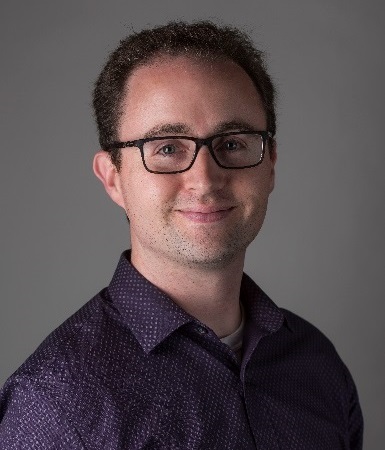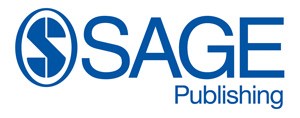Utilizing Technology to Maximize User Experience
An Interview with an Academic Mover & Shaker
Chad Haefele is the Head of User Experience and Assessment at University of North Carolina Chapel Hill. There, he coordinates a team of three full-time staff members and two graduate students in the University Libraries. Their mission is to communicate the value and impact of campus libraries by assessing and improving the university’s web presence, services, and physical locations.

By Karen Phillips, SVP of Global Resources at SAGE Publishing
 Chad Haefele is the Head of User Experience and Assessment at University of North Carolina Chapel Hill. There, he coordinates a team of three full-time staff members and two graduate students in the University Libraries. Their mission is to communicate the value and impact of campus libraries by assessing and improving the university’s web presence, services, and physical locations.
Chad Haefele is the Head of User Experience and Assessment at University of North Carolina Chapel Hill. There, he coordinates a team of three full-time staff members and two graduate students in the University Libraries. Their mission is to communicate the value and impact of campus libraries by assessing and improving the university’s web presence, services, and physical locations.
In 2011, Chad was honored as an LJ Mover & Shaker. SAGE is always looking for new ways to support librarians as they enhance the experience of their patrons; we are dedicated to breaking down barriers to learning and research. I asked Chad a few questions so both myself and the LJ community could learn more about his user experience expertise.
1. You have spearheaded multiple projects across campus in your time at UNC Chapel Hill. What has been one of the most exciting projects you have worked on and why?

As I get further into my career, I’m more and more excited by what I would have once considered pretty straightforward projects. Doing user research is always exciting for me now; I love learning how people use our services. That momentary surprise when they do something I didn’t expect, followed by a new understanding of the logic behind their choice, is always amazing.
Even after talking to just a few users, I feel better equipped to help shape the libraries to their needs. And that’s always exciting. It’s one thing to introduce a new technology or service to campus, but it’s another thing entirely to know in advance that it’ll meet a need.
2. What has been the most successful improvement to the UNC library you have helped to make? Why did you embark on that effort?
I might be cheating a little here, since this project isn’t done yet, but I’m really proud of the work I’ve done as part of the TRLN Discovery Project. I’m on a team that includes contributions from UNC-Chapel Hill, Duke, NC State University, and NC Central University. Together we’re working to build a new discovery layer for our catalog, leveraging more than a decade of collaboration to build the features and infrastructure that we’ve always wanted. When it’s done in mid-2019, we’ll be in an amazing position to respond to our users’ needs with future development and enhancements.
Just about everybody on campus has to use the catalog at some point in their tenure here. We have a responsibility to make that experience as seamless as possible. Our systems and collections are complex, but they don’t have to appear that way. We built our own discovery layer with Endeca long ago, but the open source community that’s formed around Blacklight and other options since then is truly exciting. I’m incredibly lucky to work with colleagues across institutions who have the skills and enthusiasm to pull something off at this scale.
3. When communicating the value and impact of your library across campus, what is one thing you always keep in mind?
Context and medium are important, maybe even the most important things about communication. Different groups have different needs from us, and our value has to be presented in a way that makes sense to them. Faculty want very different things from the libraries than an undergrad looking for a midnight study spot, for example. A spreadsheet of statistics rarely communicates value by itself; it has to be wrapped up in a story that shows what we bring to the table.
To be clear, I’m not advocating making something up or pandering to what we know an audience wants to hear. But everybody has limited time and bandwidth, and our message has to be delivered efficiently and tailored to them.
4. Looking forward, what is a technological advancement that you hope to one day implement into your library?
This is getting harder and harder to plan in advance. Ten years ago you could look at something concrete and obvious like mobile technology, and think about the implications it had for our service. Advances in tech are squishier and harder now, with webs of consequences that are often impossible to untangle from each other.
But I’m really interested in what will emerge from those connections, especially customization of library services for our users. Of course there’s huge privacy issues involved, but I believe we can navigate that conflict and provide at least some level of customized, predictive services. It’s going to be tricky to balance the expectations users bring from their broader technology use with libraries’ long-held values of privacy and non-invasive data use, but if we don’t try, we’ll cede a ton of ground in our users’ expectations of us.
5. How has your professional life changed since being honored as an LJ Mover & Shaker?
The department I’m in now, User Experience and Assessment, didn’t exist in 2011. I owe a huge debt to the administration of UNC-Chapel Hill Libraries for recognizing the need to take our users’ experiences seriously, but also that we already had staff in place in existing departments with the interest and skills to take it on. They took a risk pulling us together into one unit, and I might be biased but I think it’s paid off.
Even before my department existed, the project that I was nominated for was about providing a new, experimental way for users to experience library resources and spaces. It’s always been baked into my work, but now I’m lucky enough to have formal structures and support to keep thinking that way.
SPONSORED BY
RELATED
ALREADY A SUBSCRIBER? LOG IN
We are currently offering this content for free. Sign up now to activate your personal profile, where you can save articles for future viewing










Add Comment :-
Comment Policy:
Comment should not be empty !!!